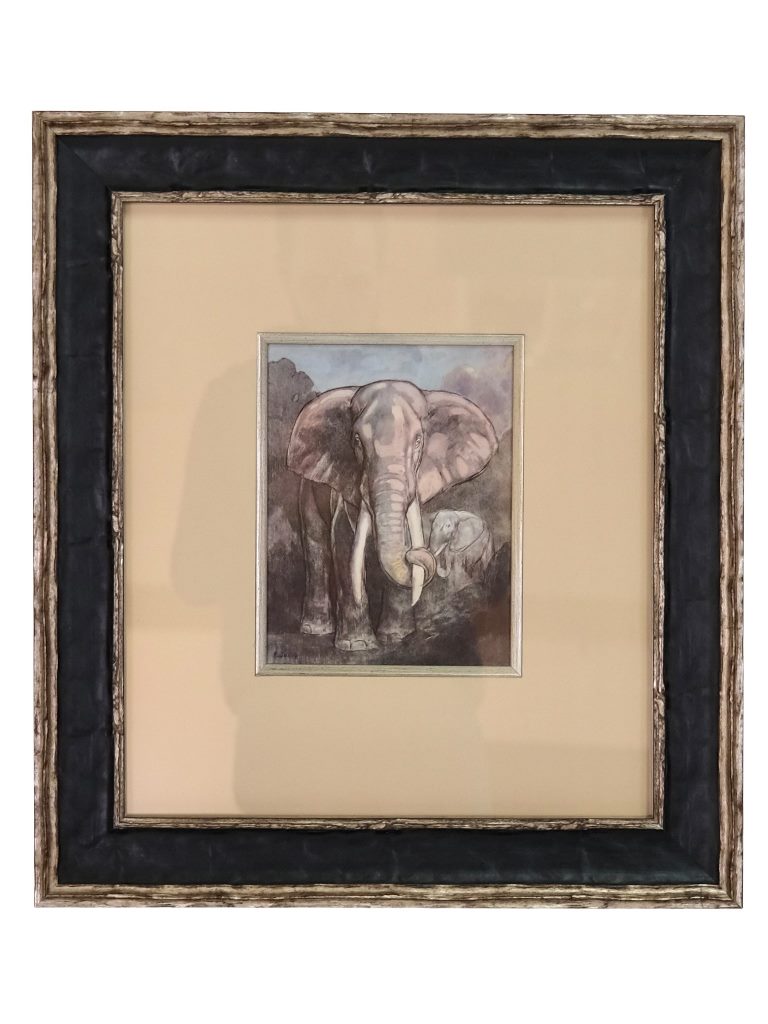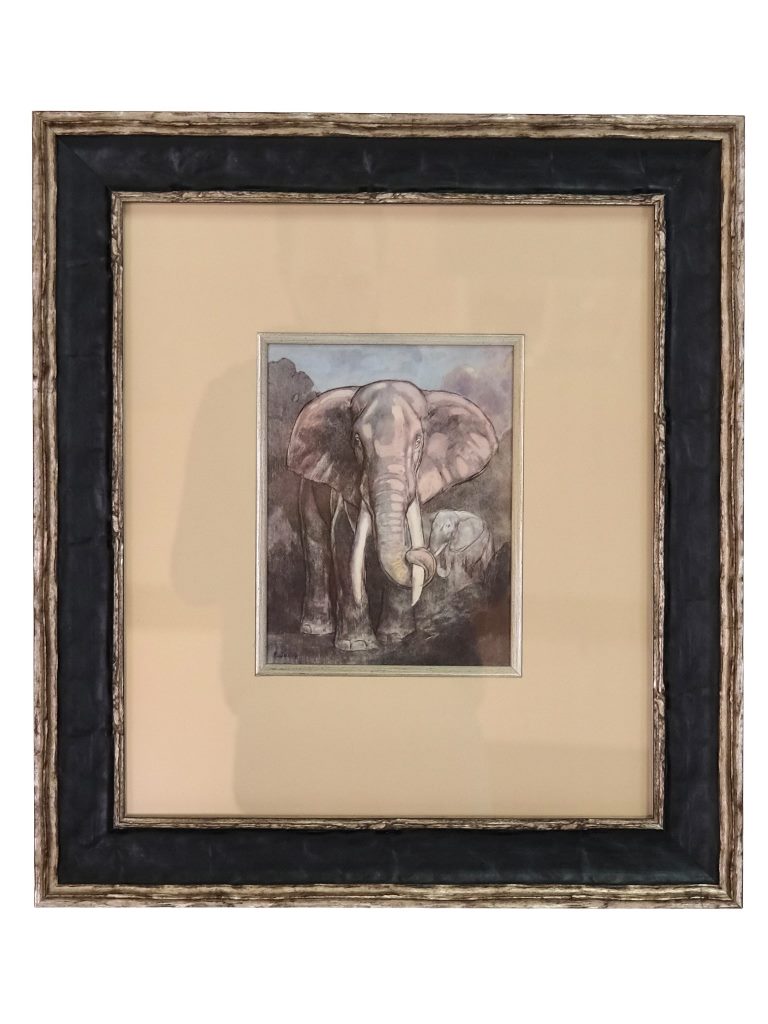Graphic of an elephant with cub
Nr. 2286 | 2.600,-- Euro
Elephant with cub
Signed: “Paul Jouvé”
(1878 -1973)
Colored graphics with passepartout and new frame.
Height: 57 cm | Width: 51cm
Price: 2.600,– €
(Including 19% VAT that is deductible)
Graphic of an elephant with cub
Paul Jouve was a French sculptor and painter who lived from 1878 to 1973. He was born in Montmartre, a district of Paris, and grew up in a family of artists.
Jouve studied at the École des Beaux-Arts in Paris, where he was taught by Alexandre Falguière and Auguste Rodin, among others. Although he was trained as a sculptor, Jouve became best known for his depictions of animals, which he often created in the form of paintings and drawings.
He traveled the world, visiting places such as Africa and the Middle East. His travels inspired him to create a variety of animal depictions, including lions, tigers, leopards, elephants, and wolves. Jouve was known for his ability to capture the movement and energy of animals in his works like this Graphic of an elephant with cub.
In addition to his work as an artist, Jouve was a lover of animals and was involved in animal welfare. He was a co-founder of the Paris Animal Shelter and advocated for the protection of predatory and wild animals.
Paul Jouve was a well-known artist in his time and received numerous awards, including the Grand Prix de Rome in 1900. His works are now exhibited in museums and galleries around the world and are highly sought after by collectors.
Colored printmaking was an important art form in the Art Deco movement. Printmaking in the Art Deco movement was characterized by clear lines, geometric shapes, and vivid colors. Often, stylized figures and motifs inspired by the aesthetics of the Jazz Age were used. This type of art was often used in advertising and graphic design to convey a modern and luxurious image.
The production of colored prints in the Art Deco movement encompassed various techniques such as lithography, screen printing, and etching. Each of these techniques required special skills and techniques to achieve the desired results.
Lithography was one of the most important techniques in printmaking in the Art Deco movement. This technique used stones or plates to transfer the image onto the paper. The artist would draw the design onto the stone or plate and then apply ink to the surface. The printing process was very elaborate and required a lot of skill and patience.
Another important technique in printmaking in the Art Deco movement was screen printing. This technique used a mask to print the design onto the paper. The ink was pushed through a sieve, and the image was transferred to the paper. This technique was particularly well-suited for creating large-scale prints.
Art Deco at RSA Wiesbaden
You can find more Art Deco cabinets, Art Deco chests of drawers and Art Deco lamps in my shop in Wiesbaden. Regine Schmitz-Avila – your specialist for French Art Deco furniture and art objects from around 1930.



